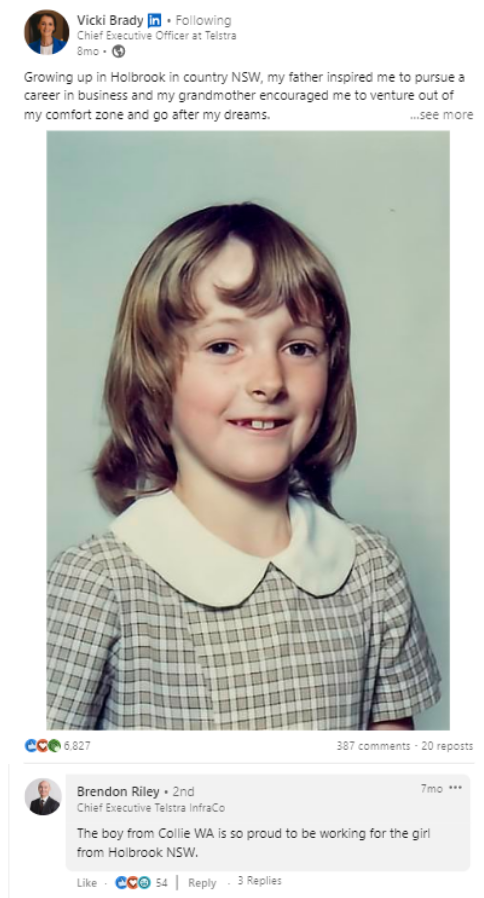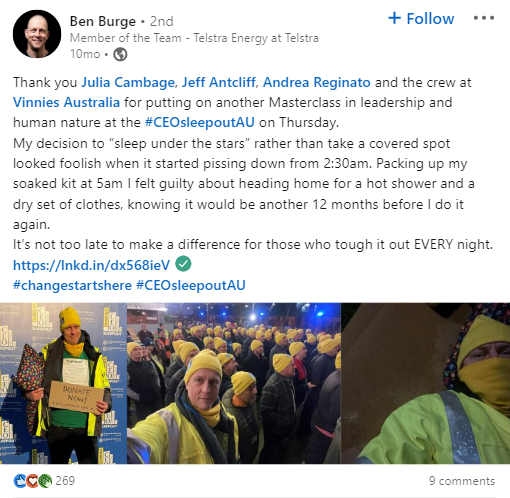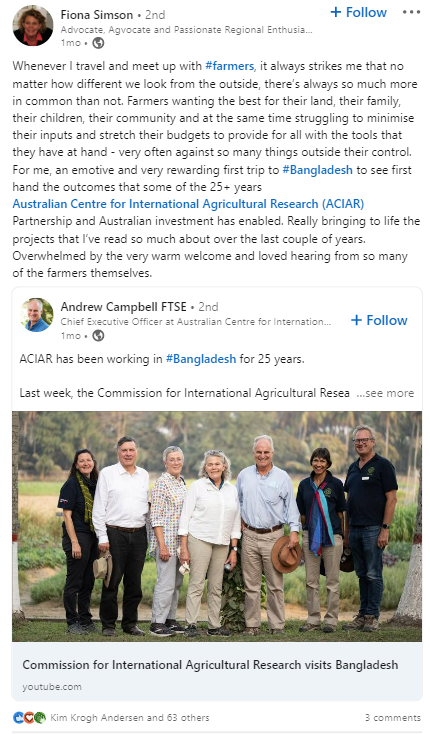What’s the value of getting your executive team on social media? Yes. Not just the one leader, but the whole executive – a digital coalition. I pose this question because there’s great risk with taking a one leader approach to social media.
If you talk to any leader, they’ll tell you the personal challenge of being the sole mouthpiece for the whole organisation and how hard it is to talk to every issue and audience online, particularly those they’re not best placed to discuss. And if you talk to any board, they’ll tell you the risks involved in having the one digital hero and how key person risk creates as much of a succession nightmare online as it does offline.
If these challenges resonate, this is an episode you simply can’t miss. I’m thrilled to be joined by Kim Krogh Andersen, Group Executive at Telstra heading up Telstra’s product and technology group and also the leader accountable for accelerating the organisation’s digital leadership. Tune in, join the conversation on LinkedIn, take a read below and be sure to subscribe to the newsletter too so you don’t miss a beat.
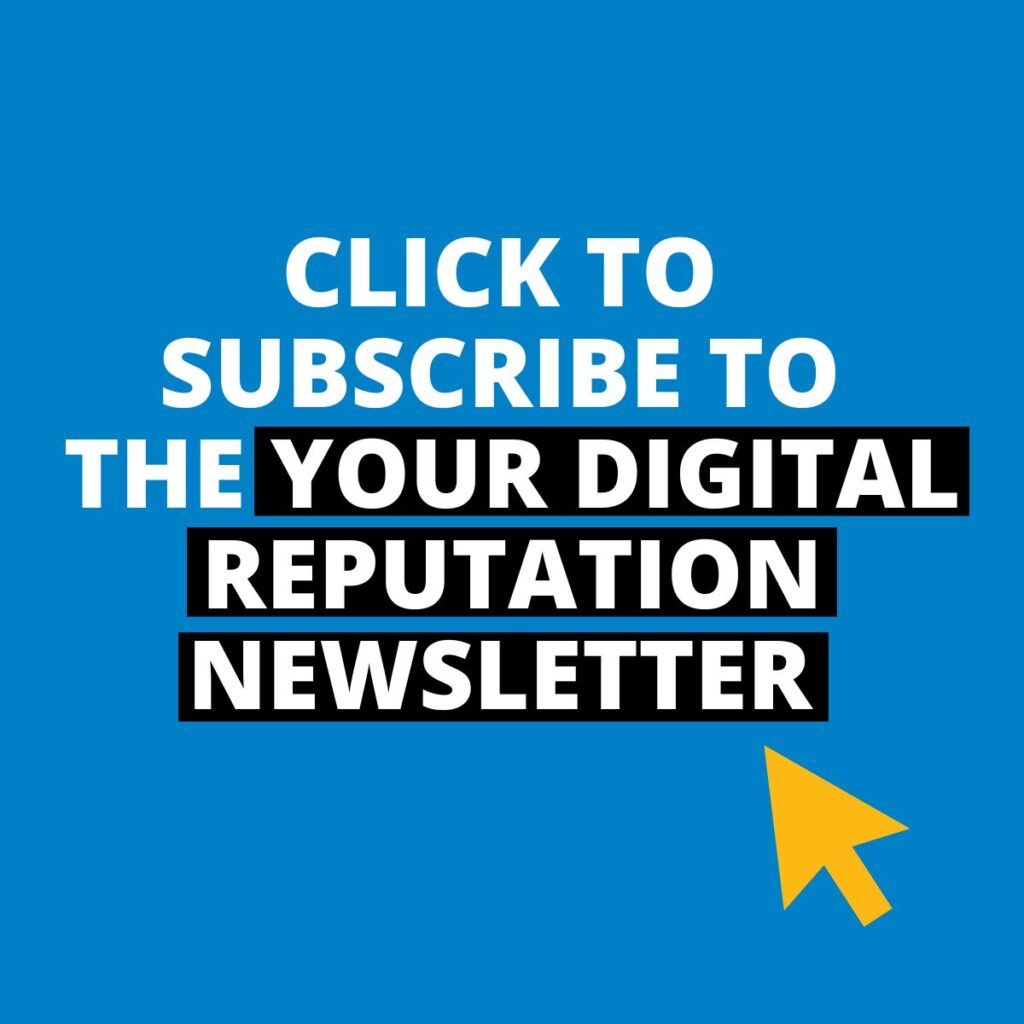
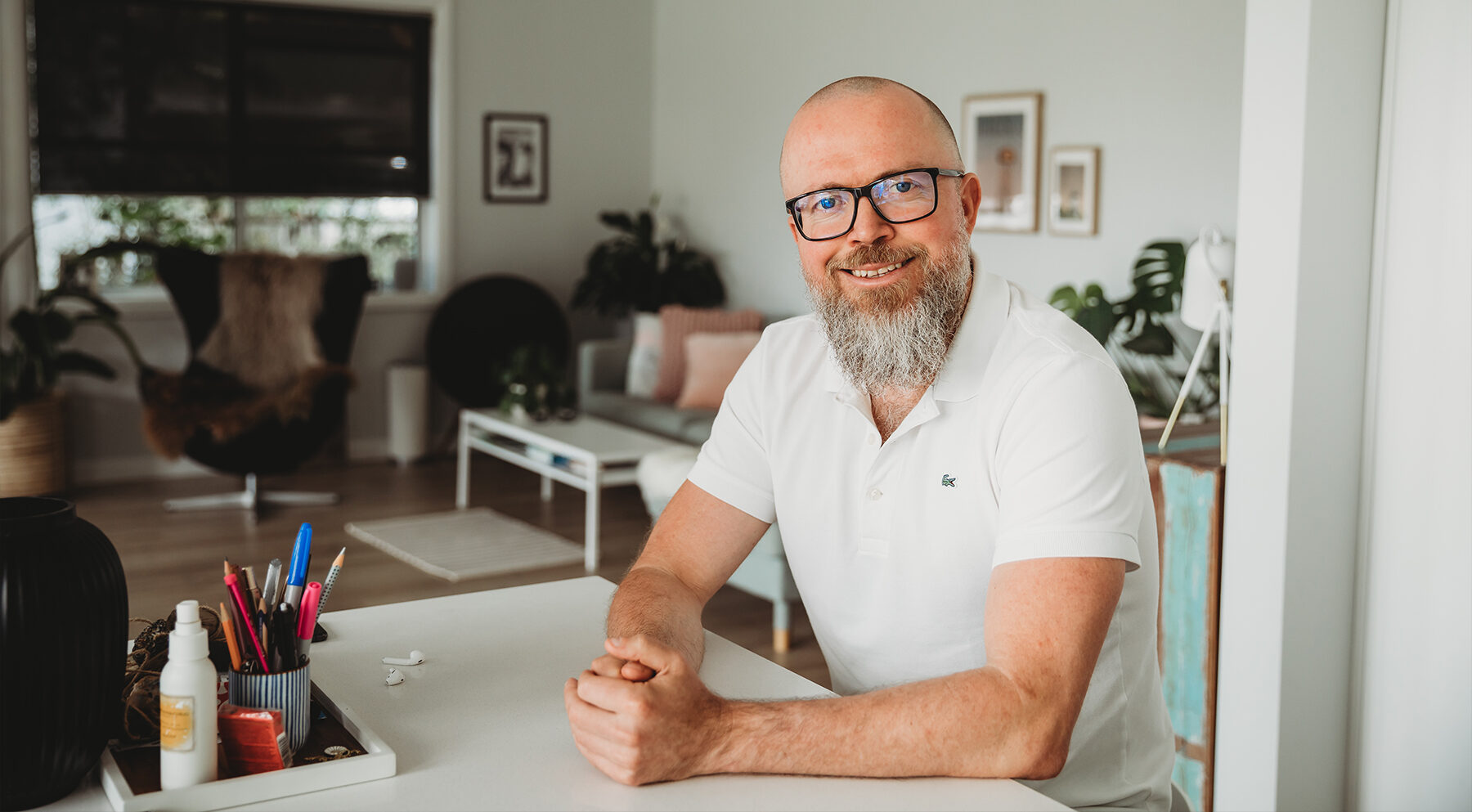
Roger Christie: Kim, I’d love to start by going back to where it all began for you and and your own online journey. So, when did you first get active on social media and why?
Kim Krogh Andersen: Right, that’s many years ago. But, I would say that it was probably curiosity. I felt it was an interesting space where I could learn faster and I could really engage the entire globe. Even when back living in my home country, Denmark I could really keep on top of what’s going on globally, the trends and innovation.
Then over time it really changed. I saw the opportunity for me to start creating a digital profile for myself, but also for the organisation I was a part of. For me, to keep on embracing innovation is something that is super important – not only for the customers to see that they are engaging with an innovative company, but also for the partners and ecosystem you are a part of.
I think we sometimes underestimate how important it is for our own employees. It’s super important for them to be proud of the organisation they belong to. …For me, [social media] has really become a way to engage with communities and the whole ecosystem we are a part of.
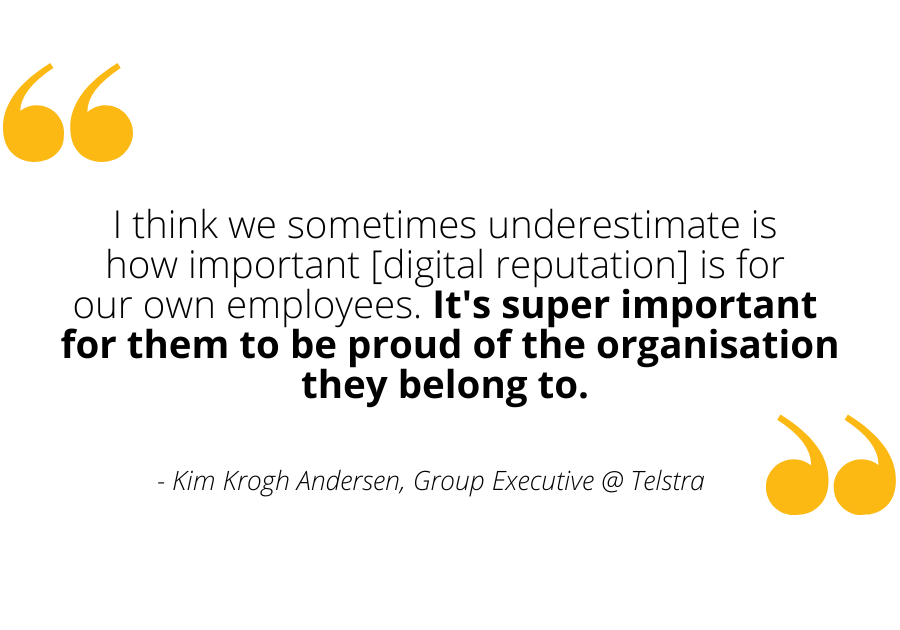
Roger Christie: That word you used – “ecosystem”. That’s the best visual; a collaborative and coordinated effort where you are working hand in hand, online as much as you are offline. That idea of an ecosystem is one that’s often lost with leaders who go into social media with a me mindset vs a we mindset. But on the contrary, you’re tagging staff, you’re tagging partners and they’re doing the same. You’re working together. It’s a really nice, aligned and constructive mindset.
Kim Krogh Andersen: And to be honest, it’s not only for social media. I see that more and more becoming a prerequisite for us to be part of a growing ecosystem. I think it’s a part of a growth mindset that we have that ability to work together. The starting point must be that we grow the pie together instead of competing, competing, competing.
That’s a change for Telstra and most companies as that’s not how they’ve operated in the past. Coming back from Mobile World Congress, which is one of the biggest telco events globally in Barcelona, it was so interesting to see how much it was all about ecosystem and collaboration. If I compare that to the last, 10, 15, 20 years I’ve been a part of this industry, that’s really a change.
I think social media is a very good way to show that culture and walk the talk when tech colleagues, tech partners and you together post about some of the initiatives you are rolling out with customers. And when you do, it also opens it up for your employees and broader leadership to do the same. It’s also a way to not take all the responsibility yourself and all the pride yourself. It’s a way to share some of the wins together with your team, and also with your colleagues.
Roger Christie: It’s such a good explanation of the benefits. I wonder if your willingness to learn faster, that willingness to be curious, to collaborate and to absorb what others are doing – I wonder how much of that is reflected in who and where you are as a leader today?
Kim Krogh Andersen: When people ask me, what is your career advice? I have always said: curiosity and keep learning. That’s really what is important if you want to be successful. I’ve never said no to a challenge. I have always just taken the challenge, not because I want the challenge, but because I want to accelerate and maximise my learning. The nature of digital gives you that ability to learn fast, and it also takes away country boundaries. You can really work globally. You can really get knowledge from all over the world from a global platform like LinkedIn, for instance. I think it really gives you the opportunity to accelerate learning and if you accelerate learning, normally you’ll also accelerate your career.
Roger Christie: And social media is the best way to do all those sorts of things at scale. And I just think that’s the opportunity here. You can access, as you are talking about there, that global marketplace of ideas and relationships and that’s such a powerful mechanism, both for the individual and the organisation as well. Now, Kim, you just talked about how you never turn down a challenge. I want to go back to the start of 2020 as you joined Telstra as a Group Executive, just as the COVID pandemic was spreading. Is that right?
Kim Krogh Andersen: I joined Telstra in January 2020 and if you remember, that was just at the end of the [Australian] bush fires. And then we had the floods, and then COVID hit. I think in a period like that where you are in lockdown and you’re joining a new company, with new colleagues and lots of employees that you have never met, digital and social media became so much more important. You want the team to somehow relate to you and the vision you come with and the strategy you try to execute on. But you don’t have that ability to stand in front of them and meet them every day, to have that regular communication with them so they can start to feel that they know you and know the vision you bring to the company.
Without social media e.g. LinkedIn where most of our employees follow us executives, but also the internal comms and digital tools e.g. Yammer and Microsoft Teams, I don’t know how I would have coped with this situation. It’s so difficult to go into a role like this which comes with a lot of accountability across the company without having that ability to communicate on a daily basis and really create that relationship with your employees and your management team.
It’s not only social media, it’s also the internal communications. Digital communications just becomes such an important part. And of course, COVID accelerated that, not only inside Telstra, but across most companies and not only companies but the whole society. That’s something that we look at with a lot of accountability inside Telstra because we are an enabler of that opportunity to communicate like that. It brings connectivity much higher up the value chain of importance.
Roger Christie: That idea around intimacy you talked about is something that we talk about on this podcast; this concept of ‘intimacy at scale‘ and how digital platforms allow you to do that.
We had Mike Kaiser, a Director General within Queensland government on this show recently. He was talking about how he’s not going to meet every single person in his department, and he’s certainly not going to meet everyone across the whole the broader Queensland government. But what digital allows him to do is to share bits about himself – that ability to connect with teams, with partners and with peers. It allows him to do that in a way that he otherwise couldn’t. And so people do walk up to him in the coffee line and have a chat about something that he shared because they feel they understand more about him as a human being. Is this the experience that you are sharing too, in terms of not having that formal face-to-face, getting to know you time?
Kim Krogh Andersen: One hundred percent. It was interesting coming back from that big event with approximately a hundred thousand participants in Barcelona. People came up to me as they felt they knew me (it can actually be a little bit embarrassing) because they have seen my posts. It’s interesting when that digital world meets the physical world.
So, I think it’s so important how you communicate. To be transparent, when I started on LinkedIn, I was mostly just sharing links and articles that I found interesting – that was part of where I was at on my career journey. But now it’s important for me that I don’t share random stuff because then the interest will go away.
It’s very important that I’m an active part of how I distribute knowledge and share insights on LinkedIn. It’s important that it’s something I can associate myself with, something that is very important for me, for the part of the organisation I’m a part of, but also for the broader community. So I try to really be across it and ensure that people can recognise it’s Kim posting and not just a random person sharing something.
I think there’s a risk on social media when you start potentially merging LinkedIn with some Microsoft products or Chat GPT. I’m all for using technology – that’s a part of my job and I think there’s a lot of opportunities with AI capabilities. But it’s super important we ensure that personal storytelling because at the end of the day, it is you that communicates. I think we all need to take that very seriously because otherwise you lose impact over time.
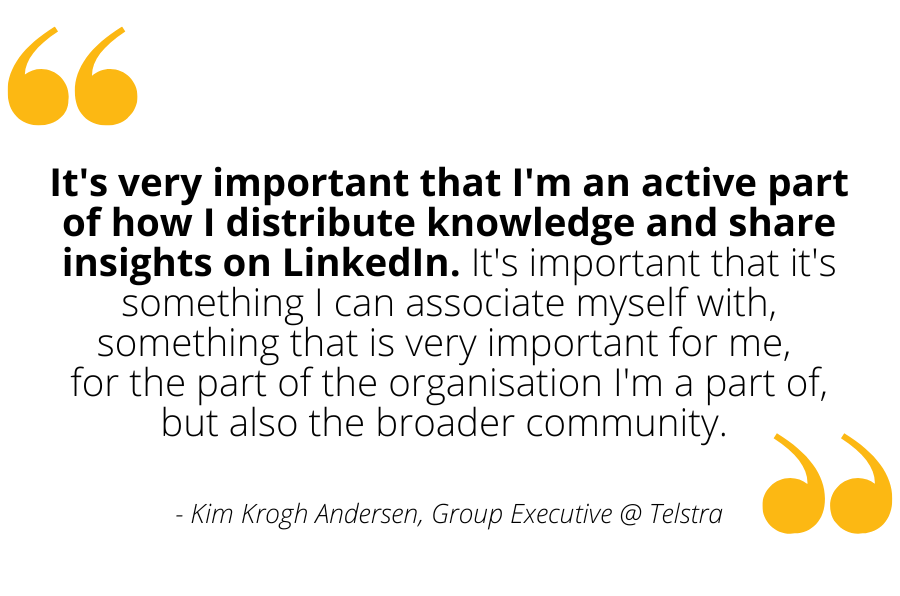
Roger Christie: Now I should also say for full transparency, Propel does not work with you or with Telstra but I do consider your efforts as an executive team to be best practice in this market. In fact, if you look at our recent Digital Reputation Report, your CEO and executive colleague Vicki Brady was the most engaging leader overall and actually generated seven times more engagement per post than the average, effective and active leader. So that’s quite a result!
What I admire about your efforts as a business and as an executive team is that it extends beyond the brand, it extends beyond Vicki – the fact that you and your executive peers are active, and the fact that the broader workforce are also all quite active online. I appreciate you can only speak from your own experience or perspective, but how do you divide and conquer? How have you worked out what patch Kim owns and what Kim does with your own authentic voice?
Kim Krogh Andersen: Our comms team are very good and they’re also good at advising us not only with what has relevance, but how to use digital media in the best possible way. We have a very good comms team who take this very seriously. And then I would say Vicki is just cool. If you look at the way Vicki posts, it’s really about things that matter for her, not only what matters for Telstra. If you look at some of the posts that got the most views, it’s where she goes deep and shares her personal advice as the CEO. It’s all about being personal and authentic and Vicki is just a master of that. She really stands behind herself as a person, as a CEO and also a female CEO of Telstra which is something that is a role model for the entire Telstra and for my three girls.
…But to the broader question, how we do this – it’s not that we have clear boundaries where we can be as executives. We have a very diverse leadership team inside Telstra and we have different areas of interest where we really are caring as as individuals and then of course we have different roles as well.
If you take my own role that’s about our tech, it’s about innovation, our products, and of course how these product can impact both society, but also our customers. So that’s my starting point. Then I have a heritage from Europe, as a farmer and also as a soldier. So that’s where there is natural interest for me and then I link that back to what Telstra is doing.
And to be honest, it’s also easy to be an executive in Telstra because Telstra impacts such a big part of the society. We have so many very skilled and innovative people that do amazing stuff. We touch so many different parts of the society as well. So again, it is not difficult to be inspired to share stuff – there are so many things to take from.
But for me, my job is really my hobby. I am deeply engaged in it because I feel technology is such an important part of the future and also changing some of the things that are not good enough today, like the climate. I need to be a part of that – to help bring that message and the best technology to Australia and to our customers. I see that as a deep part of my accountability.
So when we talk about our partnerships with Microsoft, AWS, Google and all the big technology companies in the world, I see it as my role to always ensure that here in Australia we have access to the best possible technology. And again, LinkedIn is a good platform to ensure some of these relationships are stimulated.
Of course, it’s [social media] also a way to attract the right talent. We have a lot of talent inside Telstra and it’s a way for them to feel proud. If you have some of that organisational self-confidence then you can actually do amazing things. And I think that’s such an important part of becoming and being a changemaker; that confidence in knowing you have something special here. When people inside feel that, then they also become promoters. And at the end of the day, then you can also access talent that you probably couldn’t access without having that profile on LinkedIn and all social media platforms.
…So for me, [being active online] has a hardcore business impact because we can attract better talent than we could in the past. And if you have the right talent, then you can do bigger things. It’s not for fun. It’s actually for Telstra, for our employees and also for the community we are a part of.
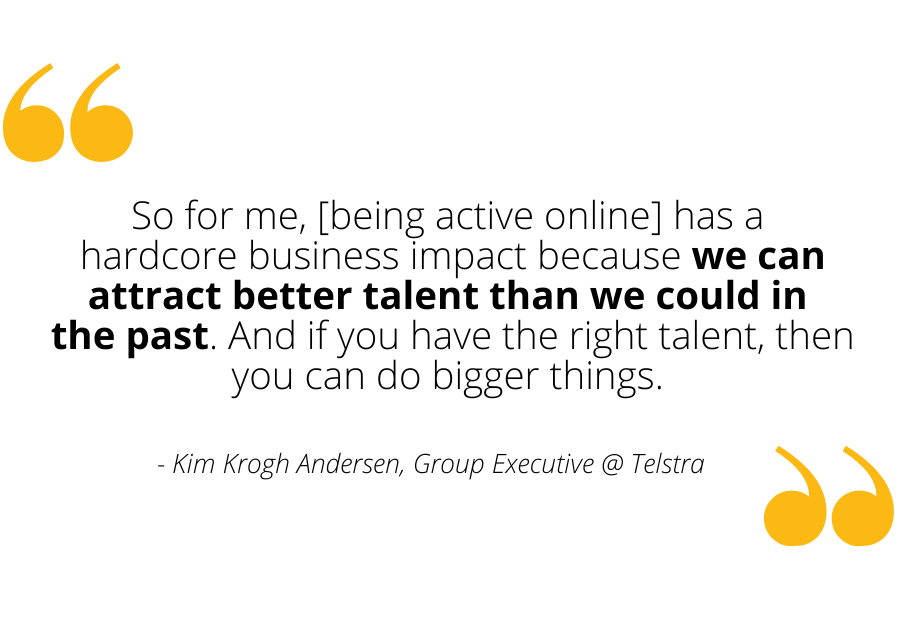
Roger Christie: As you’re describing the benefits, the things that you are doing, the fact that you feel obviously empowered to do this, that you’re setting an example for others to equally feel empowered and how that’s working as a talent magnet, I can hear through your voice the energy and enthusiasm. And that is the power that comes through from having people equipped and able to tell their own story rather than share a homogenised version of the corporate brand and values.
You are talking about your three daughters. You are talking about your experience on a farm back in Denmark. You are talking about these things in a way that only Kim could. And in a way that your executive peers can’t. But the point is that everyone has their own story and should feel able to share that story because it will resonate with others. And digital is a way to then get that access and scale.
Kim Krogh Andersen: I agree, Roger. And I would just like to also emphasise another example, it’s actually not a company, but the whole agriculture industry in Australia.
Take a look at how engaged they are now on LinkedIn. And that’s across that industry from Fiona Simson the President of the National Farmers Federation, but it’s also startup and scale ups. It’s the whole innovation ecosystem that is doing that. They’re very good at actually tagging each other across the industry. The agriculture industry in Australia have really managed to create a profile where people can use it to share and be curious. So for me, that’s one of my favorite ecosystem to be a part of.
Roger Christie: So finally, the reality is that a lot of organisations still have that one digital hero. The one voice, one official authority who will speak on behalf of the whole organisation on LinkedIn and every message goes out through them. What encouragements would you share to executive teams out there who are relying on one person rather than a mix of voices?
Kim Krogh Andersen: To be honest, I think that there is the concern; if we are investing into our executive, they’re creating a profile on social media, aren’t we also making them more attractive as a recruitment target? Yes, probably.
But, the opposite of that is so super cool because all these heroes you’re creating inside the company, they become the voice of the company and you can attract so much more talent than the one or two you will lose on that journey. So I think again, it’s about a growth mindset. Not protecting yourself, but actually attacking, and going out there and creating growth.
If you look at my own team, I have 10 plus direct reports. For me, it’s a prerequisite for them to be on social media. I don’t accept they’re not there. Because I need them to create their profile so they can attract talent to their team. They cannot rely on me. They need to create, they need to be the executives that people they want to work for. I’ve made it part of the job description for every executive and as a broader thing in the company to ensure we are all ambassadors for the company we’re a part of.
It’s not okay as an executive to not be on social. I don’t think it is. I think it’s a part of our role to ensure that we are attracting the talent and that people know about all the good stuff we do. We all need to be role models for our own employees so they can be proud of what the company is doing.

Feel free to drop Roger Christie a note with any thoughts from this conversation. If you want more on all things digital reputation, be sure to subscribe below to the Your Digital Reputation newsletter packed full of advice, trends and the best leadership examples just for you.





